Abstract
1. [14C]Cyclamate was not metabolized when incubated with the liver, spleen, kidney or blood of rats of rabbits kept on a cyclamate-containing diet, and that had become converters of cyclamate into cyclohexylamine. 2. [14C]Cyclamate was converted into cyclohexylamine when incubated under anaerobic conditions with the contents of the caecum, colon or rectum or with the faeces of cyclamate-pretreated rats. Similar results were obtained with cyclamate-pretreated rabbits. With cyclamate-pretreated guinea pigs, which did not readily convert cyclamate into cyclohexylamine, the colon contents showed only low activity in this respect. 3. The faeces of a human converter of [14C]cyclamate into cyclohexylamine were also very active, but became less active when cyclamate was removed from his diet. 4. On subculturing the organisms from the contents of the colon and rectum of rats, the ability to convert cyclamate into cyclohexylamine was lost during three subcultures, but the loss of the activity was considerably decreased by subculturing in the presence of cyclamate. 5. Incubation of rat faeces in broths containing cyclamate increased their ability to metabolize cyclamate, but similar treatment of rabbit and human faeces suppressed this activity. 6. When rats are kept on a cyclamate diet the number of clostridia in the faeces increased considerably. In human dietary cyclamate did not appear to alter the counts of various faecal micro-organisms. 7. The gut organisms that appear to develop the ability to convert cyclamate into cyclohexylamine are clostridia in rats, enterobacteria in rabbits and enterococci in man. 8. [14C]Cyclohexylamine injected into the caecum or colon of rats is readily absorbed and excreted in the urine. 9. It appears that on continued intake of cyclamate the gut flora develop the ability to convert cyclamate into cyclohexylamine, which is then absorbed and excreted mainly in the urine, although a small proportion is metabolized to other compounds.
Full text
PDF
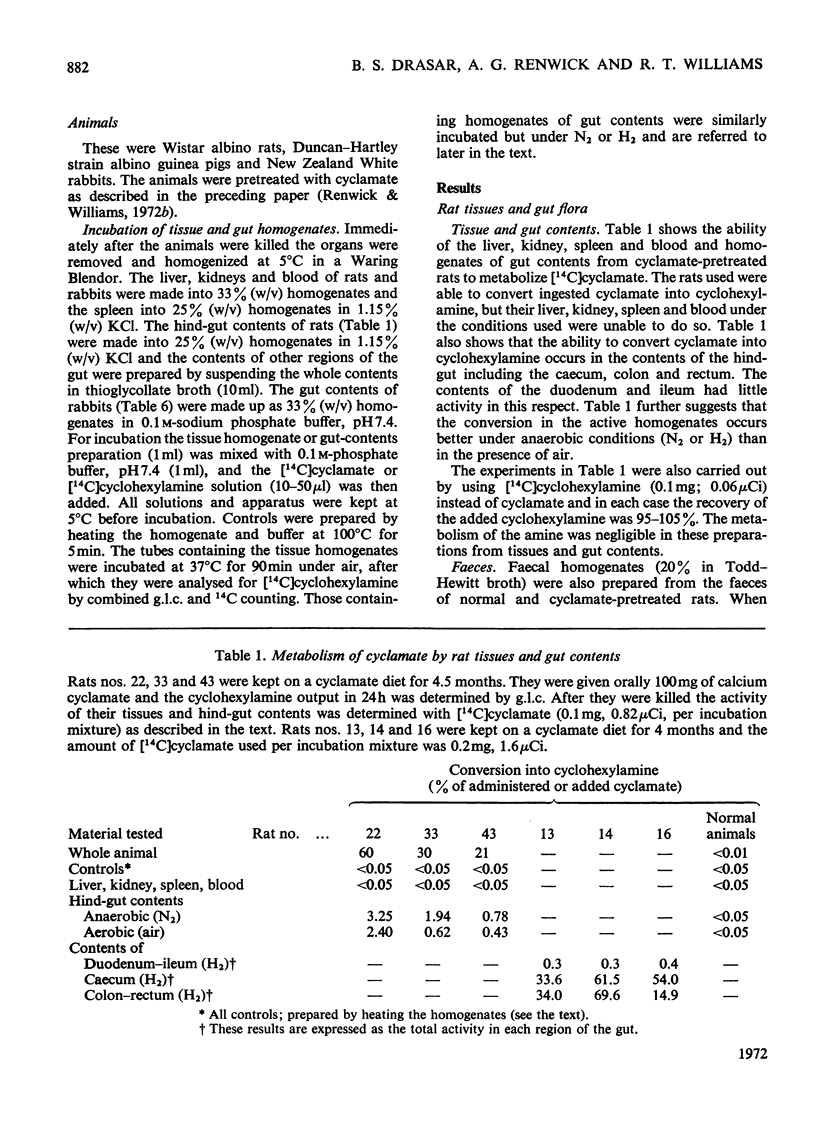
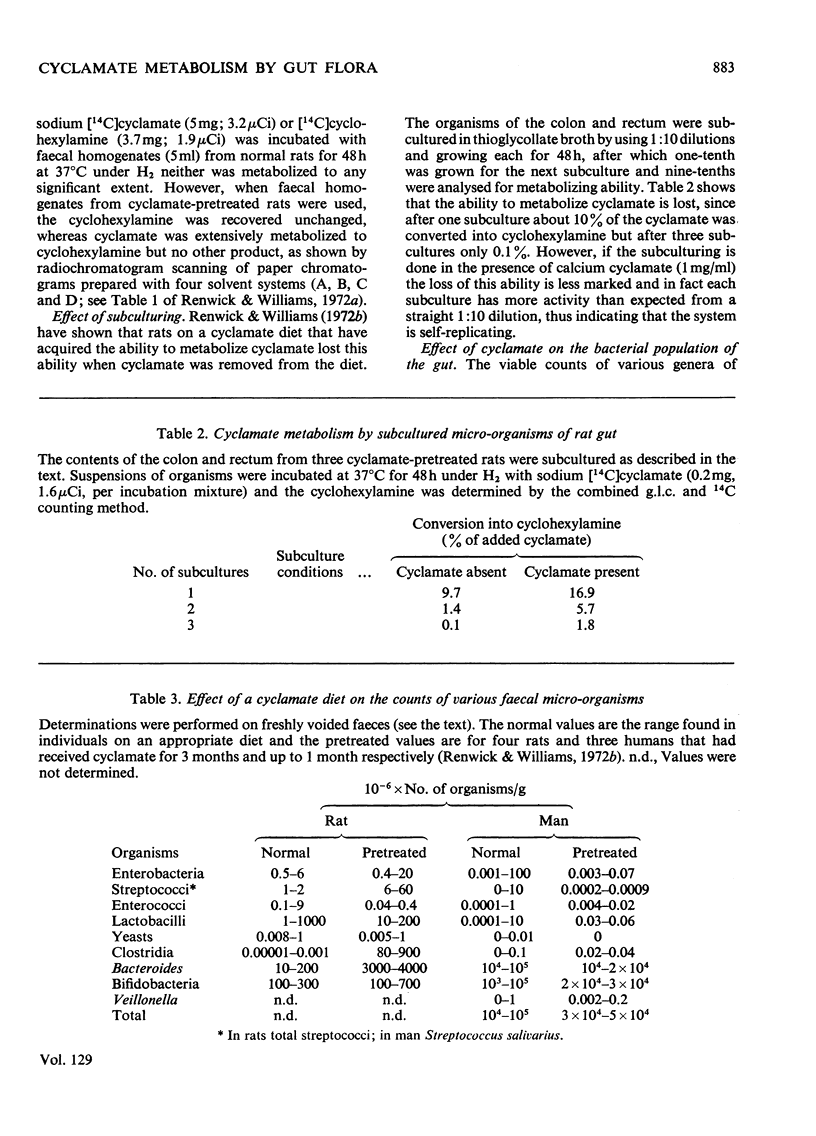
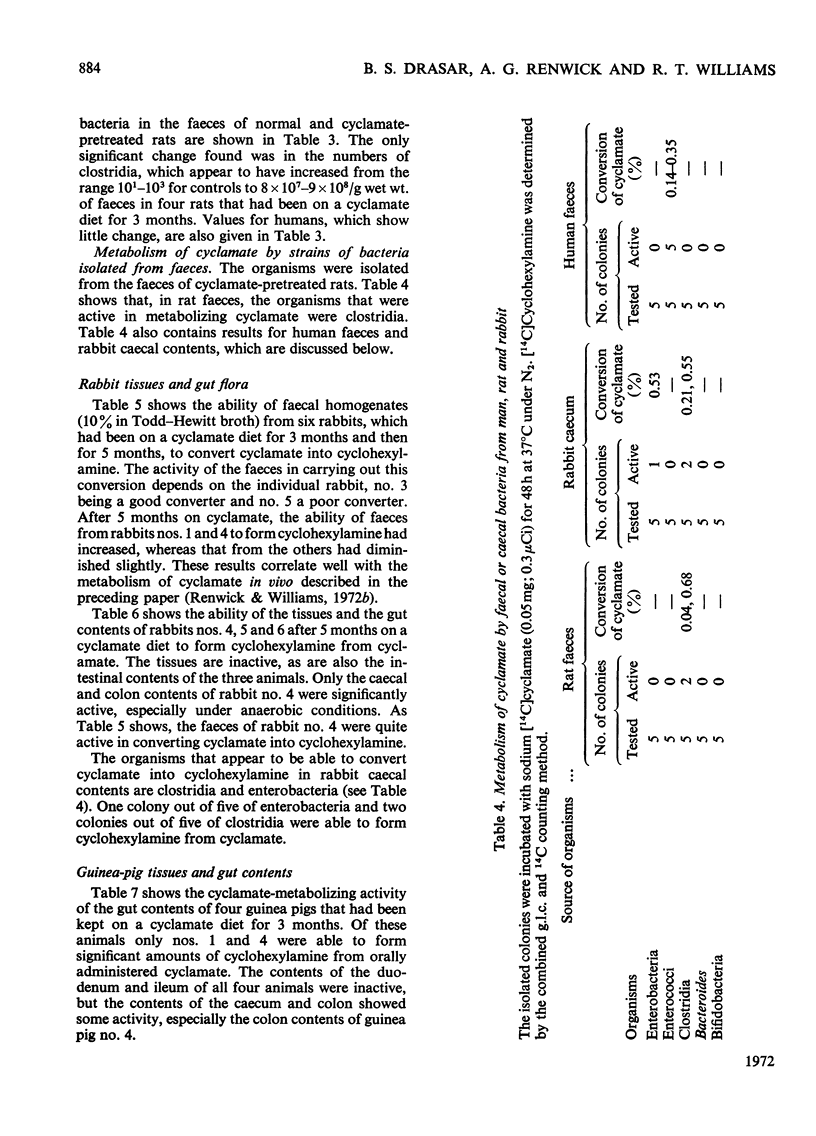
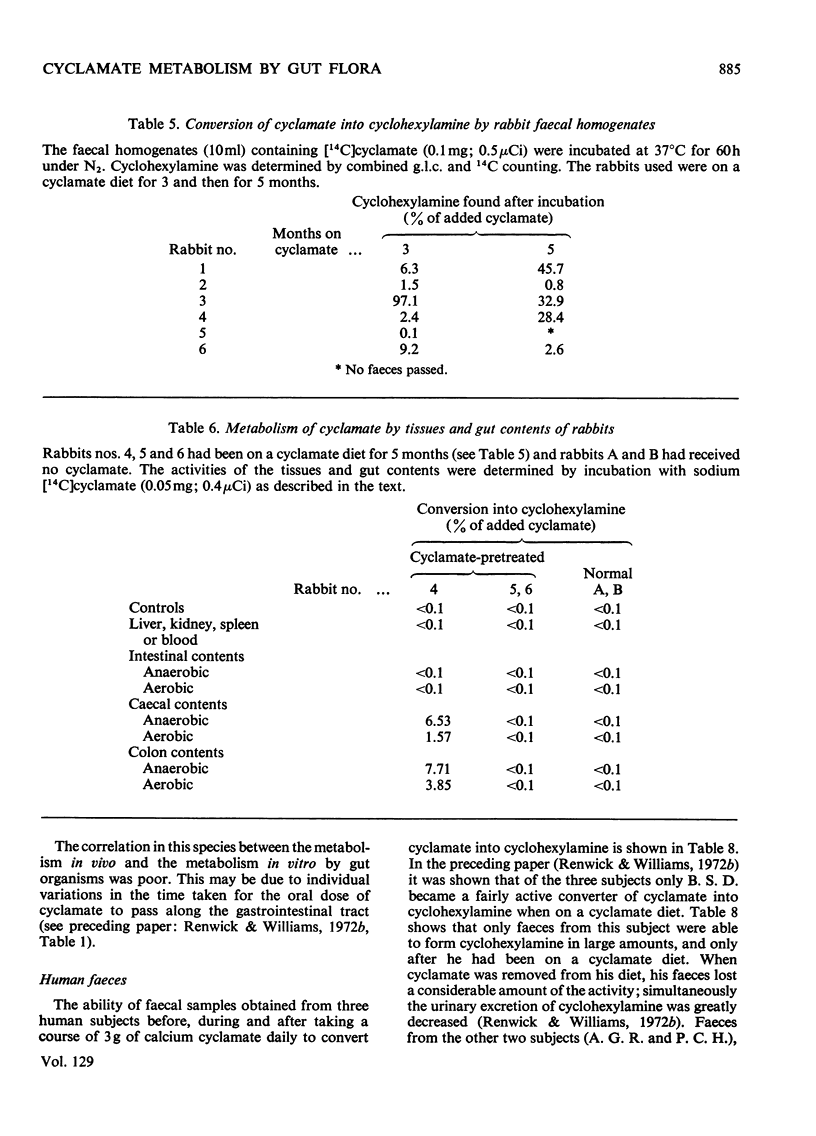
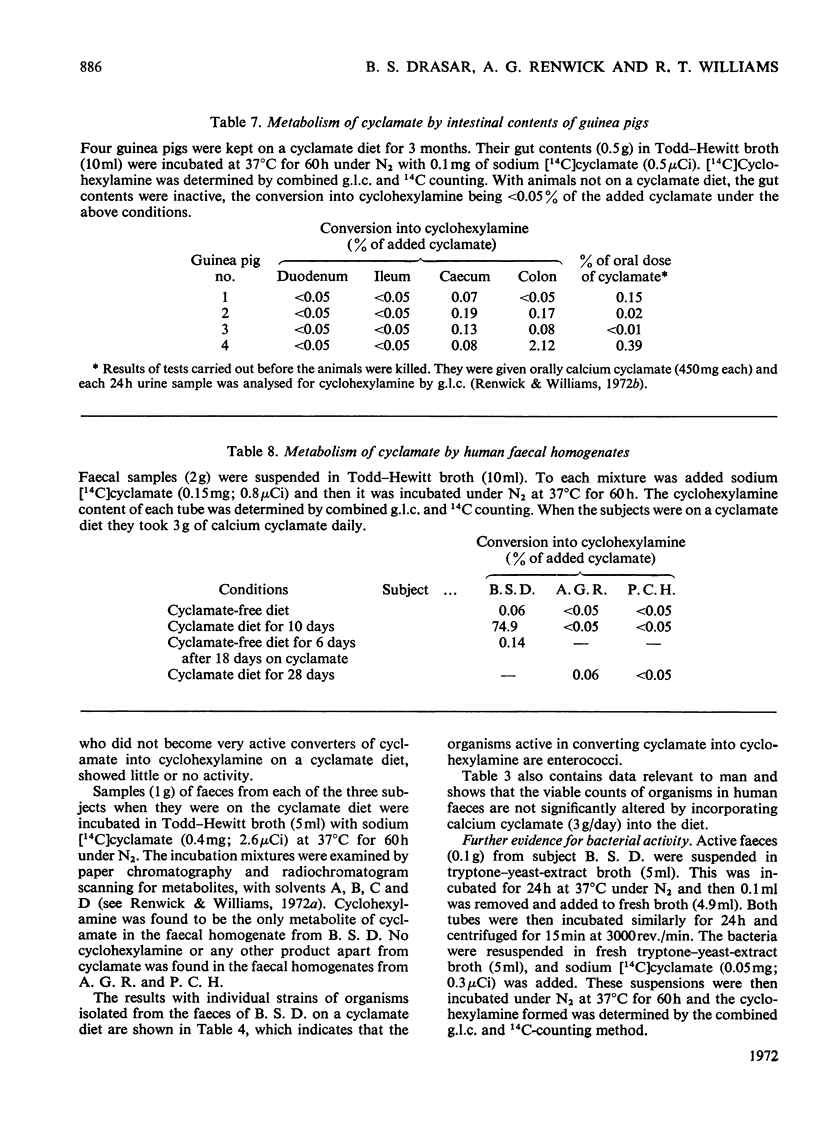
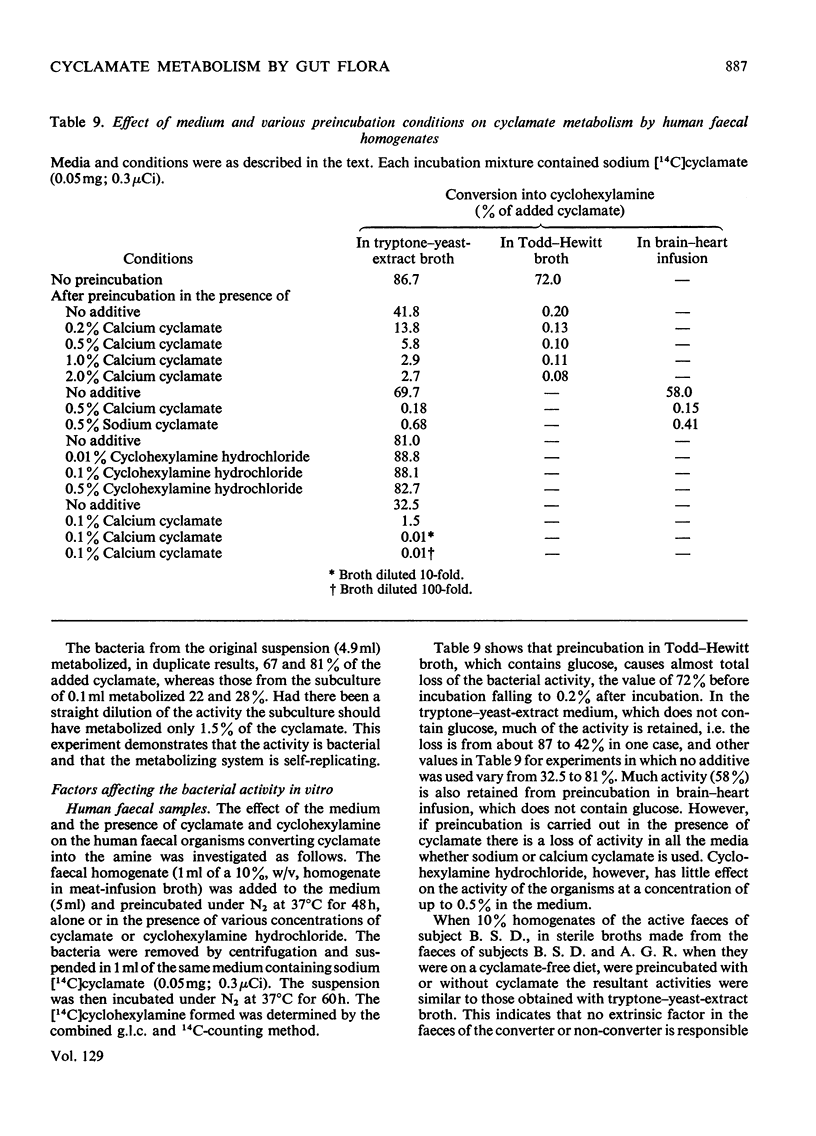

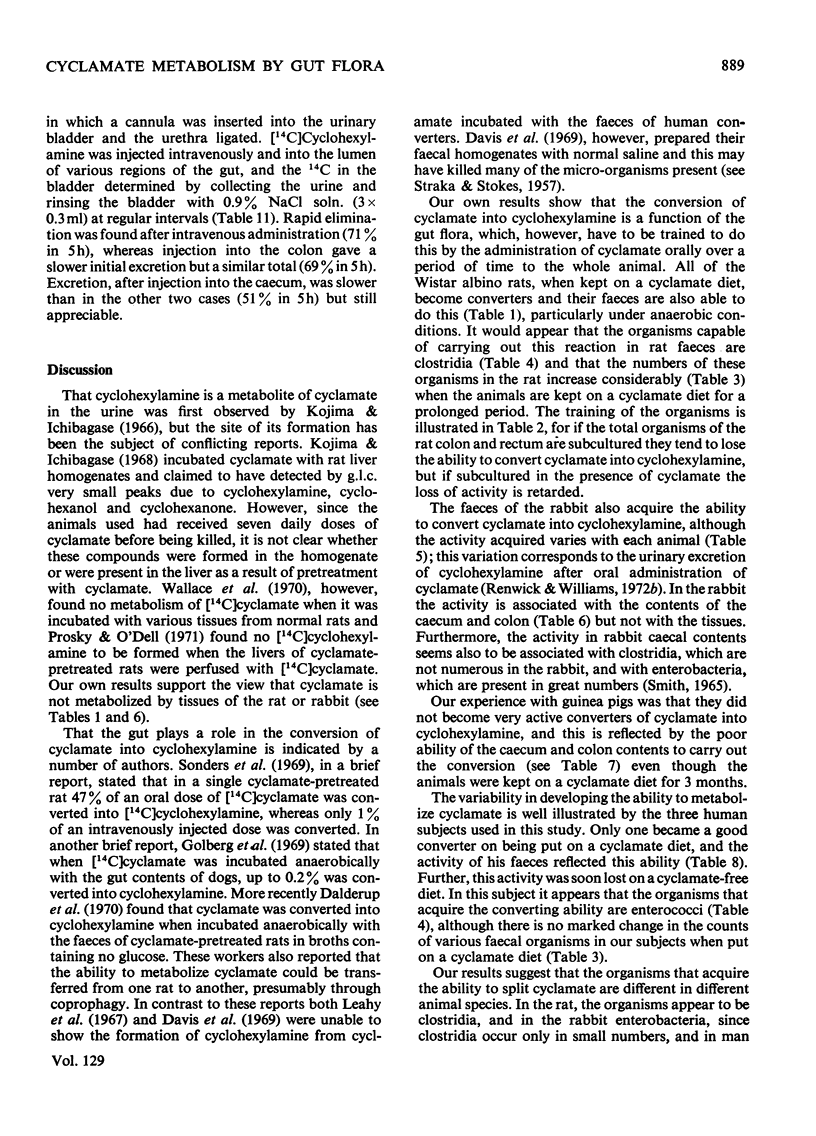
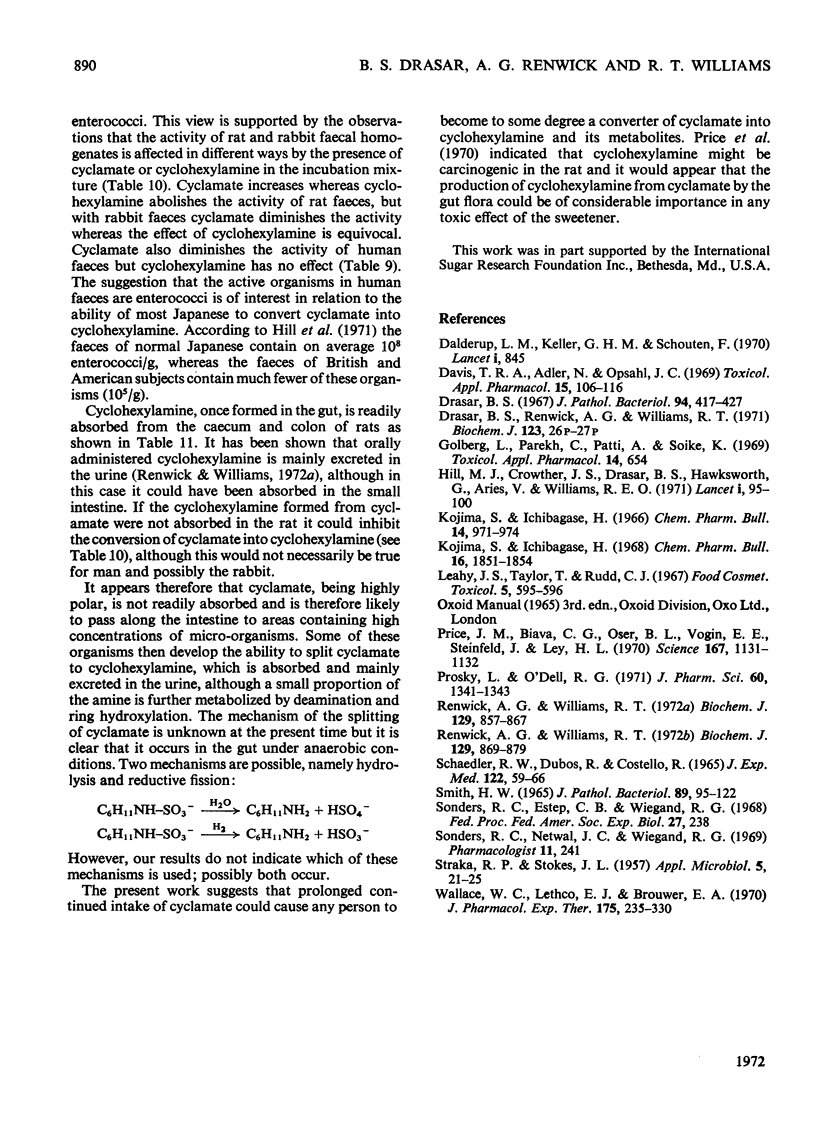
Selected References
These references are in PubMed. This may not be the complete list of references from this article.
- Dalderup L. M., Keller G. H., Schouten F. Cyclamate and cyclohexylamine. Lancet. 1970 Apr 18;1(7651):845–845. doi: 10.1016/s0140-6736(70)92451-7. [DOI] [PubMed] [Google Scholar]
- Davis T. R., Adler N., Opsahl J. C. Excretion of cyclohexylamine in subjects ingesting sodium cyclamate. Toxicol Appl Pharmacol. 1969 Jul;15:106–116. doi: 10.1016/0041-008x(69)90138-0. [DOI] [PubMed] [Google Scholar]
- Drasar B. S. Cultivation of anaerobic intestinal bacteria. J Pathol Bacteriol. 1967 Oct;94(2):417–427. doi: 10.1002/path.1700940223. [DOI] [PubMed] [Google Scholar]
- Hill M. J., Drasar B. S., Hawksworth G., Aries V., Crowther J. S., Williams R. E. Bacteria and aetiology of cancer of large bowel. Lancet. 1971 Jan 16;1(7690):95–100. doi: 10.1016/s0140-6736(71)90837-3. [DOI] [PubMed] [Google Scholar]
- Kojima S., Ichibagase H. Studies on synthetic sweetening agents. 13. Metabolism of sodium cyclamate. (2). Detection of metabolites of sodium cyclamate in the rabbit and rat by gas-liquid chromatography. Chem Pharm Bull (Tokyo) 1968 Sep;16(9):1851–1854. doi: 10.1248/cpb.16.1851. [DOI] [PubMed] [Google Scholar]
- Kojima S., Ichibagase H. Studies on synthetic sweetening agents. 8. Cyclohexylamine, a metabolite of sodium cyclamate. Chem Pharm Bull (Tokyo) 1966 Sep;14(9):971–974. doi: 10.1248/cpb.14.971. [DOI] [PubMed] [Google Scholar]
- Leahy J. S., Taylor T., Rudd C. J. Cyclohexylamine excretors among human volunteers given cyclamate. Food Cosmet Toxicol. 1967 Oct;5(4):595–596. doi: 10.1016/s0015-6264(67)83210-3. [DOI] [PubMed] [Google Scholar]
- Price J. M., Biava C. G., Oser B. L., Vogin E. E., Steinfeld J., Ley H. L. Bladder tumors in rats fed cyclohexylamine or high doses of a mixture of cyclamate and saccharin. Science. 1970 Feb 20;167(3921):1131–1132. doi: 10.1126/science.167.3921.1131. [DOI] [PubMed] [Google Scholar]
- Prosky L., O'Dell R. G. In vivo conversion of 14 C-labeled cyclamate to cyclohexylamine. J Pharm Sci. 1971 Sep;60(9):1341–1343. doi: 10.1002/jps.2600600910. [DOI] [PubMed] [Google Scholar]
- Renwick A. G., Williams R. T. The fate of cyclamate in man and other species. Biochem J. 1972 Oct;129(4):869–879. doi: 10.1042/bj1290869. [DOI] [PMC free article] [PubMed] [Google Scholar]
- Renwick A. G., Williams R. T. The metabolites of cyclohexylamine in man and certain animals. Biochem J. 1972 Oct;129(4):857–867. doi: 10.1042/bj1290857. [DOI] [PMC free article] [PubMed] [Google Scholar]
- SCHAEDLER R. W., DUBOS R., COSTELLO R. THE DEVELOPMENT OF THE BACTERIAL FLORA IN THE GASTROINTESTINAL TRACT OF MICE. J Exp Med. 1965 Jul 1;122:59–66. doi: 10.1084/jem.122.1.59. [DOI] [PMC free article] [PubMed] [Google Scholar]
- SMITH H. W. OBSERVATIONS ON THE FLORA OF THE ALIMENTARY TRACT OF ANIMALS AND FACTORS AFFECTING ITS COMPOSITION. J Pathol Bacteriol. 1965 Jan;89:95–122. [PubMed] [Google Scholar]
- STRAKA R. P., STOKES J. L. Rapid destruction of bacteria in commonly used diluents and its elimination. Appl Microbiol. 1957 Jan;5(1):21–25. doi: 10.1128/am.5.1.21-25.1957. [DOI] [PMC free article] [PubMed] [Google Scholar]
- Wallace W. C., Lethco E. J., Brouwer E. A. The metabolism of cyclamates in rats. J Pharmacol Exp Ther. 1970 Nov;175(2):325–330. [PubMed] [Google Scholar]


